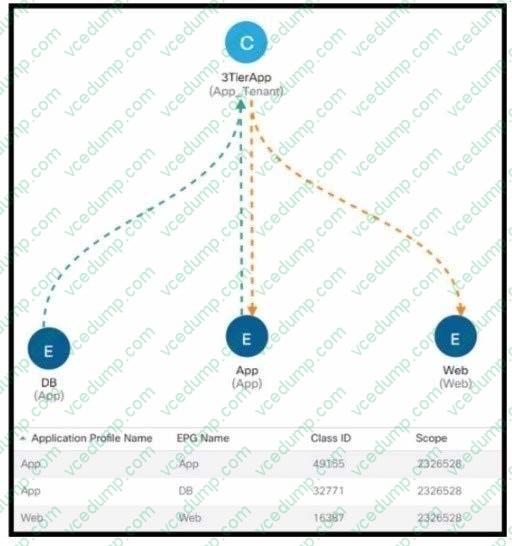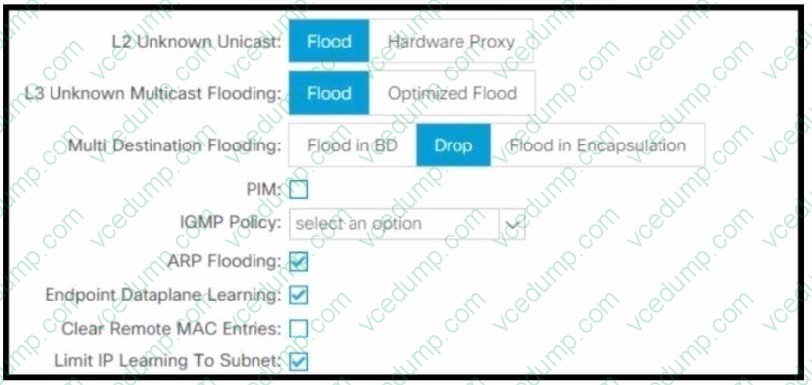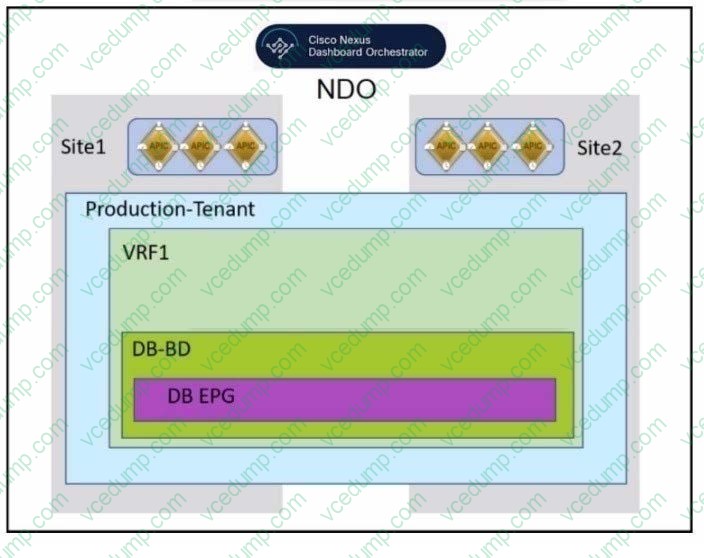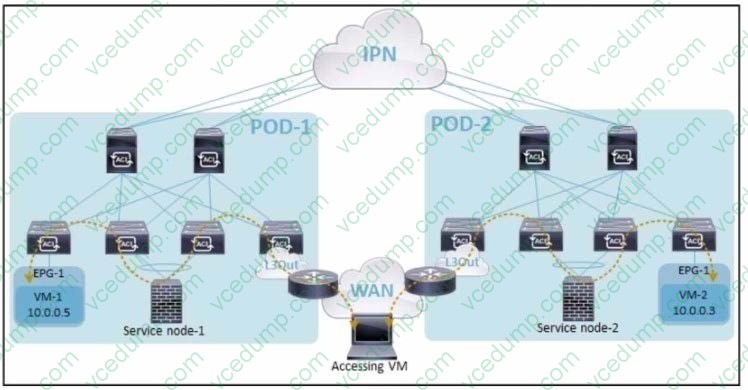300-630 Exam Details
-
Exam Code
:300-630 -
Exam Name
:Implementing Cisco Application Centric Infrastructure - Advanced (DCACIA) -
Certification
:CCNP Data Center -
Vendor
:Cisco -
Total Questions
:119 Q&As -
Last Updated
:Jan 06, 2026
Cisco 300-630 Online Questions & Answers
-
Question 1:
An engineer must implement an L3Out within a tenant to allow the reachability to services outside of the Cisco ACI fabric. The requirement is to allow communication from the EPGs in the same VRF to the external services and save TCAM resource utilization. Which contract insertion method must be used to meet these requirements?
A. Provider: each service EPGs Consumer: vzAny inside the VRF
B. Provider: each service EPGs Consumer: L3Out external EPGs
C. Provider: L3Out external EPGs Consumer: each service EPGs
D. Provider: L3Out external EPGs Consumer: vzAny inside VRF -
Question 2:
Which mechanism is used by ACI spine switches to maintain a consistent copy of the endpoint address and location information?
A. COOP
B. ISIS
C. BD
D. OSPF -
Question 3:
Refer to the exhibit.

New e-commerce software is deployed on Cisco ACI fabric. The environment must meet these requirements:
The overall number of contracts must be reduced by reusing the existing contracts within a VRF when possible.
The e-commerce software must communicate only with software EPGs that are part of the same ANP.
The e-commerce software must be prevented from communicating with applications in different ANPs.
Which scope must be selected to meet these requirements?
A. Tenant
B. Global
C. Endpoint Group
D. Application Profile -
Question 4:
Refer to the exhibit.

Which method does Cisco ACI fabric use to forward L2 Unknown Unicast packets?
A. The source leaf sends the traffic to all ports in BD.
B. Packets are dropped if dMAC is absent in COOP.
C. The traffic is flooded using VRF Outer Multicast Group ID.
D. Traffic is flooded to all Layer 2 ports of ACI fabric. -
Question 5:
What is a characteristic of a stretched bridge domain solution between Cisco ACI sites with Layer 2 flood enabled?
A. BUM traffic between sites leverages ISN multicast replication.
B. The solution reduces control plane overhead.
C. Spine head-end replication is used to forward BUM traffic between sites.
D. Contracts are local to the provided site. -
Question 6:
Refer to the exhibit.

An engineer must allow IP mobility between Site1 and Site2 in a Cisco ACI Multi-Site orchestrator. The design must meet these requirements:
A disaster recovery (DR) solution must exist between the sites that do not require vMotion support.
The application must be started at a DR site without having to re-IP the application servers.
The solution must avoid any broadcast storms between the sites.
Which two actions meet these criteria? (Choose two.)
A. Deploy a local EPG for Site1 and Site2.
B. Define a unique bridge domain subnet per site.
C. Configure STP between Cisco ACI fabrics.
D. Apply the L2 Stretch feature.
E. Disable inter-site BUM Traffic. -
Question 7:
Refer to the exhibit.

The requirement is to prefer the local PBR node and redirect the traffic to the remote pod PBR node in the case of catastrophic node failure. Which configuration meets these requirements?
A. location-based PBR host route advertisement resilient hashing
B. symmetric PBR location-based PBR resilient hashing
C. symmetric PBR unidirectional PBR resilient hashing
D. location-based PBR host route advertisement node tracking -
Question 8:
Which requirement applies to migration from Cisco NX-OS mode to Cisco ACI mode with Cisco Nexus 9000 Series Switches?
A. Pre-existing vPC topology must be removed before the migration is started.
B. A permit-all contract must be used for traffic that flows inside the data center.
C. Pre-existing FCoE must be removed from the Nexus devices.
D. A minimum of five Cisco APIC appliances must be used in the data center network. -
Question 9:
Which PIM version must be configured in the Inter-Pod Network to allow broadcast, unknown unicast, and multicast flooding between Cisco ACI pods?
A. Bidirectional PIM
B. PIM dense mode
C. PIM sparse mode
D. Source Specific Multicast -
Question 10:
An engineer is configuring a Cisco ACI fabric and requires a shared L3Out network connectivity to external networks. The connectivity must be shared between different tenants. Which tenant type must be created to meet this requirement?
A. common tenant
B. infra tenant
C. management tenant
D. user tenant
Related Exams:
-
300-610
Designing Cisco Data Center Infrastructure (DCID) -
300-615
Troubleshooting Cisco Data Center Infrastructure (DCIT) -
300-620
Implementing Cisco Application Centric Infrastructure (DCACI) -
300-630
Implementing Cisco Application Centric Infrastructure - Advanced (DCACIA) -
300-635
Automating and Programming Cisco Data Center Solutions (DCAUTO) -
350-601
Implementing and Operating Cisco Data Center Core Technologies (DCCOR)
Tips on How to Prepare for the Exams
Nowadays, the certification exams become more and more important and required by more and more enterprises when applying for a job. But how to prepare for the exam effectively? How to prepare for the exam in a short time with less efforts? How to get a ideal result and how to find the most reliable resources? Here on Vcedump.com, you will find all the answers. Vcedump.com provide not only Cisco exam questions, answers and explanations but also complete assistance on your exam preparation and certification application. If you are confused on your 300-630 exam preparations and Cisco certification application, do not hesitate to visit our Vcedump.com to find your solutions here.